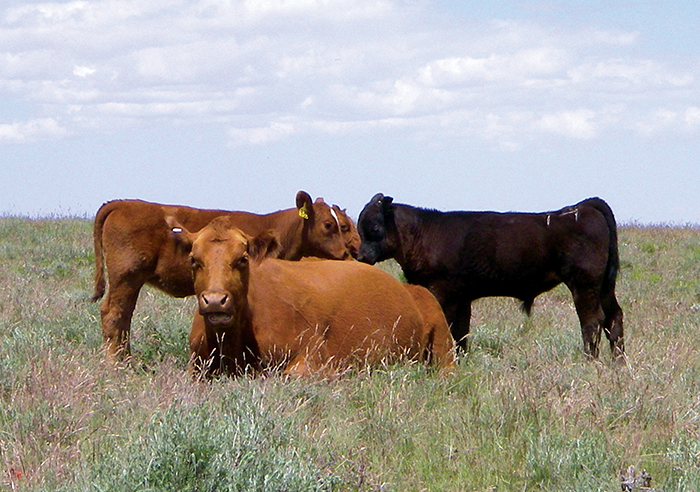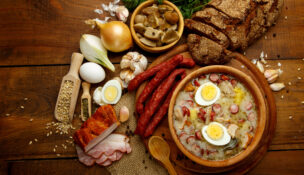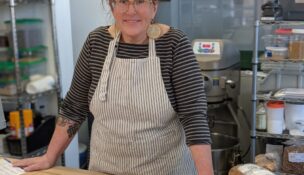Where's the beef? it's in west-central Colorado
It's a lucrative business for homes on the range
Suzie Romig //December 21, 2015//


Where's the beef? it's in west-central Colorado
It's a lucrative business for homes on the range
Suzie Romig //December 21, 2015//
Palisade peaches have the name recognition, and Western Slope wineries and vineyards have been media darlings in recent years. So who knew cattle production is actually king in west-central Colorado?
The value of cows and calves sold in Mesa, Delta and Montrose counties had already hit $80 million during the most recent U.S. agricultural census in 2012 when 131,667 head of cattle and calves were sold, said Stephen Koontz, an agricultural economist and professor at Colorado State University. Fall 2014 was huge for cattle marketing when prices reached an all-time high — 30 percent to 40 percent above normal.
“Cattle and calves are clearly No. 1 for these three counties,” Koontz says.
Supplies were low from fall 2012 through 2014, as many ranchers reduced the size of their herds due to drought conditions; but with the fairly weak U.S. dollar, exports for beef remain in demand. Koontz and other experts forecast consistently strong prices throughout this current selling season.
Mesa County resident Bill Martin knows just how cattle rules as the top agricultural commodity in the tri-country area. Martin is co-owner of Western Slope Cattlemen’s Livestock Auction in the small, unincorporated community of Loma where his staff includes a full-time veterinarian and up to 30 contract laborers who corral up to 4,500 head of cattle each week during their busy season from October to February.
“That’s a whole lot of cattle to keep separated, fed, watered and cared for,” says Martin, 57, the son of a cattle buyer.
The Loma livestock operation, which opened in January 2008, handles some 80,000 animals each year, Martin says, with 60,000 of those run through the sales ring surrounded by seating for 250 spectators. Another 10,000 head of cattle are sold via video auction, and 10,000 are sold via “private treaty,” or direct sells to previously established buyers. The large auction provides a popular selling place for hundreds of ranchers from within a 200-mile radius.
“A lot of them (ranchers), that’s their whole year’s income, and they trust us to care for their cattle and to find the best price,” Martin says. “The trend in the last 25 years is to sell cattle over video auctions. That supposedly put auctions out of business, but there’s still a real need from a service aspect to take care of cattle.”
The city of Delta is home to a long-time livestock auction, open since 1951. The Delta Sales Yard runs 50,000 head of cattle through the operation, or up to 2,500 animals a week during the busy season, including sheep, goats and horses, owner Dan Varner says. Roughly 35,000 cattle go through the sales ring annually, and many of those are 600-pound calves headed to buyers in Kansas. The Western Slope cattle barns, like many others in the U.S., also broadcast auctions live on the Internet.
Varner, age 51, says prices in 2014 “were the best ever, since I’ve been alive.”
Cattle are shipped from Loma by truck, most often to buyers in five nearby states. But the lightweight, younger cattle may be trucked to 15 different states, from Texas to California to Minnesota. Cattle sold in Loma also end up in Colorado feed lots in Weld or Morgan counties where the animals finish on grain for up to five months.
“We are the first step in the marketing process on cattle,” Martin says, “from the ranchers who raise them and sell them to people who put weight on them on grass or in feed lots and then sell to packing houses, which in turn sell to supermarkets.”
CATTLE BUSINESS CHALLENGES
Grand Junction, population 60,000, is the shopping mecca for the Western Slope, so visitors and even some locals may be surprised that cattle is a top product. Agricultural production on the Western Slope is well diversified with products such as peaches, apples, grapes, sweet corn, hay and sheep; but live cattle is the top individual commodity.
“People say, ‘I don’t see any cows,’” says Doug Dean, the Colorado State University livestock and range extension agent for the area. “There are a lot more suburban people here, and you don’t see a lot of cattle from the interstate.”
During the warmer months from mid-May to mid-October, West Slope ranchers move their cattle from dryer, lower elevations to permitted public grazing lands at cooler temperatures above 7,000 feet in more mountainous areas from Carbondale to the Grand Mesa.
“In the winter, when the cattle are down here, people tell me, ‘I didn’t know there were this many cattle here,’” Varner says.
The auction owners and area ranchers cope with fluctuating weather and commodity prices; current higher cattle prices and more rain are helping.
“We are in our herd rebuilding phase after several years of drought and very high feeding costs statewide and nationally,” Koontz says.
NATURAL ADVANTAGES
This tri-county area is conducive to cattle ranching because more than 50 percent of the acreage is classified as pastureland, including 52 percent in Delta, 64 percent in Montrose and 69 percent in Mesa, Dean says. The average rancher on the Western Slope runs 50 to 100 head of cattle, with only a handful of operations running thousands of cattle.
Some 99 percent of the animals sold in Loma are Angus beef cattle, with a few Charolais, Simmental, Limousin, Gelbvieh and Red Angus in the mix. The biggest income generator, or cash cow, are the 500 to 800 pound calves with an average sale value of $1,400, Martin says.
“That money all goes back here. If local ranchers ship to Greeley, some of that money ends up elsewhere. It’s cheaper to them to sell locally,” Martin says.
The large numbers of animals going through the Loma sale barn consume a significant amount of locally grown grass hay – up to 1,500 tons per year. The 25-acre operation also generates plenty of fertilizer composted for fields. The yard personnel take care of anything from cleaning pens, to sorting cattle into uniform groups, to cow pregnancy checks.
Loma auction co-owner Jim Brach, 56, has worked with cattle his whole life, and the livestock auction was built on land in his family for three generations. The owners can work 15-hour days during the busy times of this seasonal business, and family members help too.
The rural auction is home to the well-reviewed Strayhorn Grill run by Martin’s wife, Sheryl, where fresh Angus burgers and prime rib sandwiches are popular.
Mesa County Administrator Frank Whidden calls the operation located 12 miles from the Utah border “amazing.”
“In an extremely rural part of the county, they built a multi-million dollar facility with no public financial help,” Whidden says.
The administrator says the beef business in Colorado may seem like a “silent industry,” but “certainly in Mesa County it brings in a huge amount of income.”


























